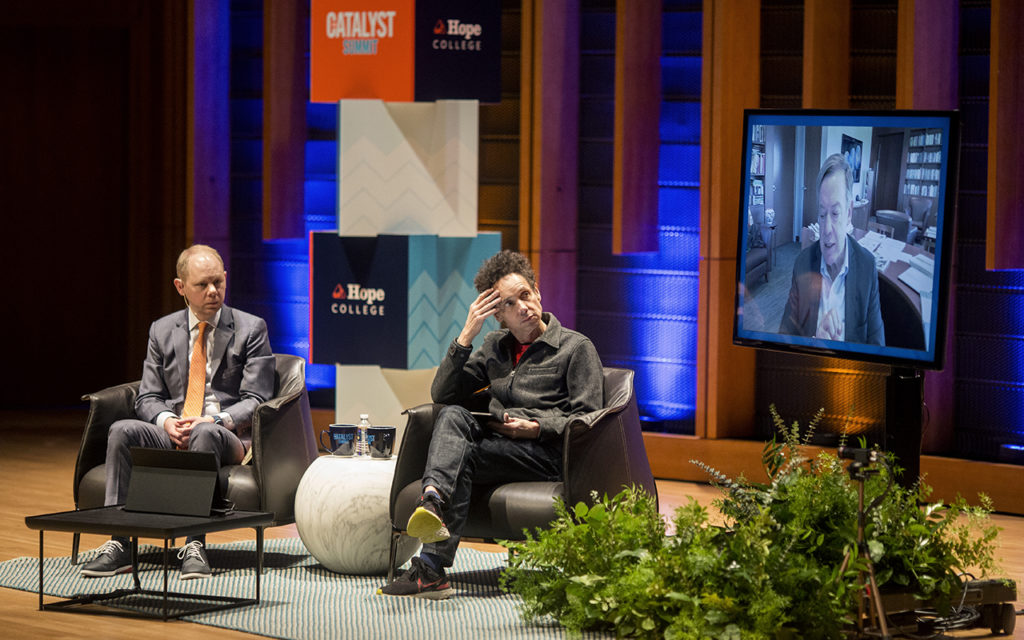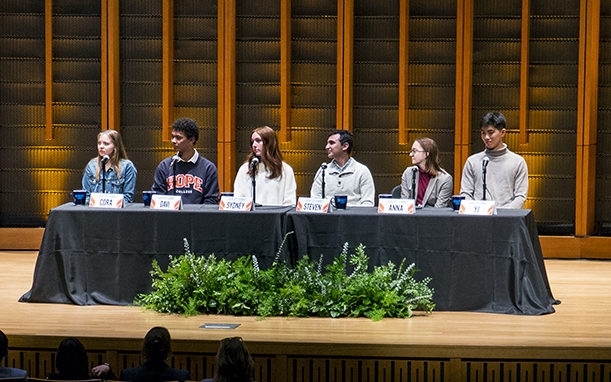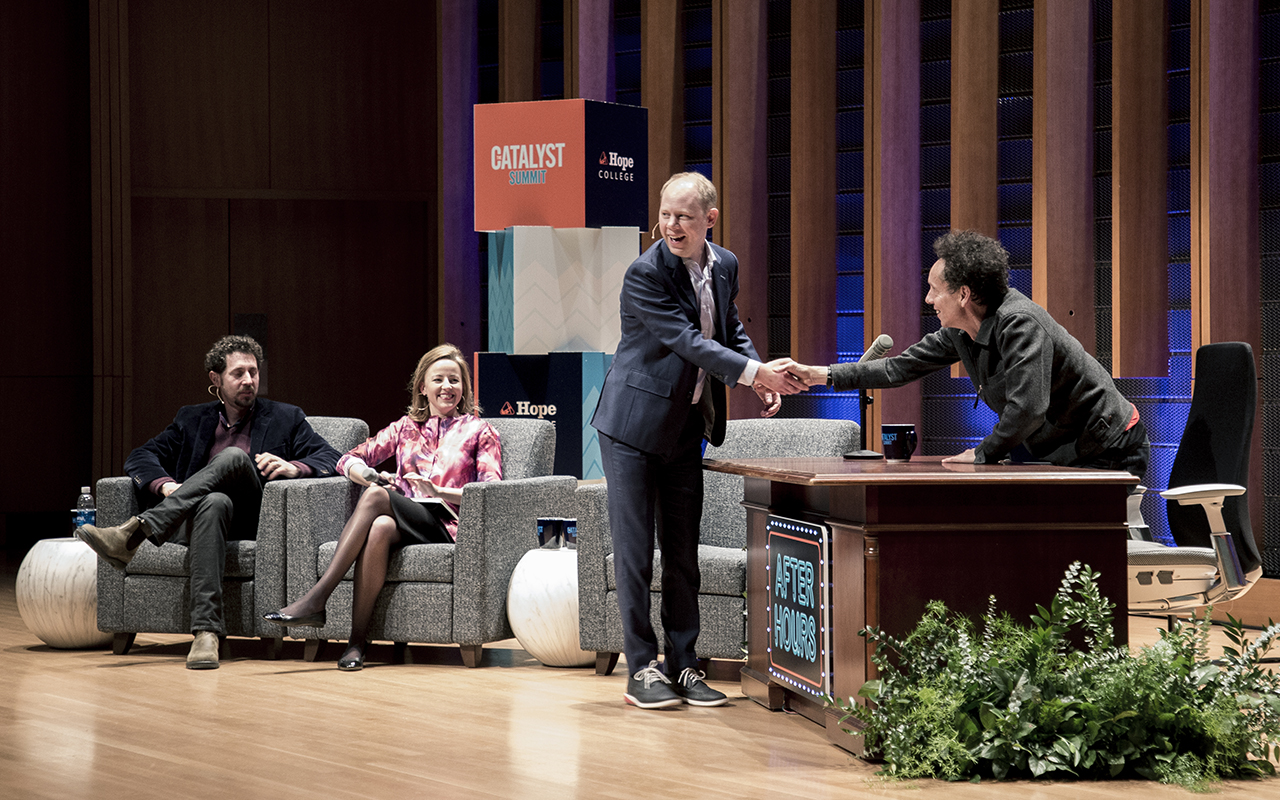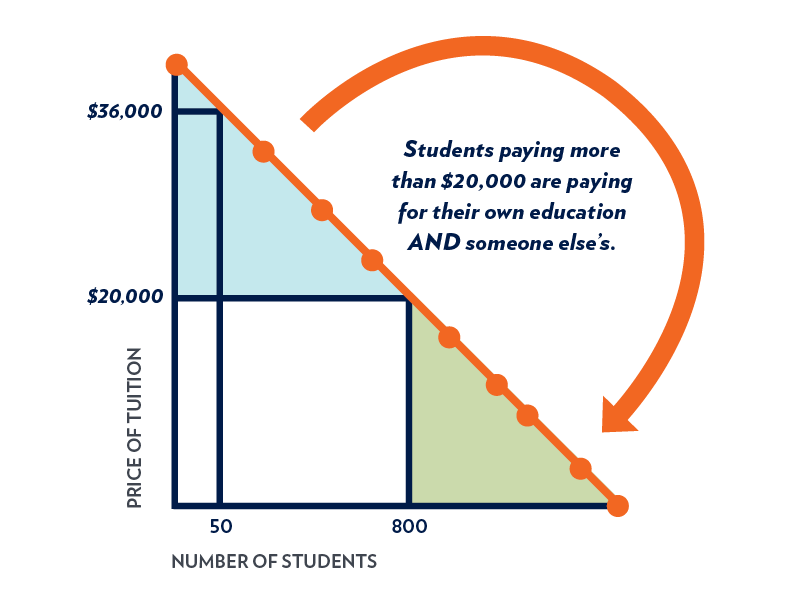cat·a·lyst ˈka-tə-ləst
: an agent that provokes or speeds significant change or action
It has been over a month since Hope College’s Catalyst Summit with Malcolm Gladwell to explore a future where higher education is built on an entirely new funding model.
With the benefit of some time to reflect on the thought-provoking content presented by our dynamic speakers, here are four things I’m thinking about:
1. Real change is a long term commitment
Describing his 15-year-long journey of transforming Arizona State University into the most innovative school in the U.S., President Michael Crowe advised Hope College to “expect to take over a decade to bring real change.”
He said “the notion of waiting 15 years for a payoff is so antithetical to the way we think as a society right now”. He urged us to not “give up too soon.”

We framed the summit around the concept of “catalyst” to reflect our commitment to spark change. We have hope that a gift-based funding model for higher education is possible. And we’re in it for the long haul!
2. Equal Access Means Equal Socioeconomic Distribution
The current funding model for higher education is squeezing out the middle class.
Typical conversations about educational access focus on those from the bottom quintile, or the poorest 20% of the population. That’s a worthy aim and needs our continued support as a society.
On the other end of the spectrum, however, top earners are disproportionately represented. This is especially true at the elite schools. The Ivy Leagues, like Princeton for example, pull 72% or more of their students from the top 20% of earners. Even colleges like Hope are not immune: 58% of our student body is from the top 20%.
The middle 60%, who can’t afford to pay for college outright but aren’t eligible for need-based aid, are losing the opportunity of a four year college degree. Analysis by the Brookings Institution found that the middle class is being disproportionately pushed into educational routes like community colleges, which are now the most common institution type attended by high school graduates from the middle 60%.
I did the math: If we as a college want to truly pursue equal access, it means having an equal distribution of socioeconomic diversity, which looks like having 20% of our student body from the top 20%, 60% from the middle 60%, and 20% from the bottom 20%.
How do we accomplish this? I think we have to move away from tuition as our funding source.
The current tuition model demands that a larger percentage of the student population have an ability to pay, in part to fund scholarships for their peers. In other words, the current tuition model is a redistribution model.
Hope Forward might feel counter-cultural in the way that it’s extended equally to everybody, regardless of their ability to pay. But if talent is equally distributed; opportunity should be also.
3. The difference between a scholarship and a gift
By far the best session of the Catalyst Summit was the student panel, where six current Hope Forward students talked about their experience with the funding model.
When asked to make their “elevator pitch” for Hope Forward, one of the students said: “anyone can get a scholarship. What’s beautiful about Hope Forward is that it’s more about giving than receiving. Receiving a gift makes you want to give.”

Hope Forward is not a scholarship. It’s a gift. The difference between the two is that a scholarship is earned (based on merit or need), whereas our vision is to one day give all our students an education through Hope Forward. In exchange our students sign a covenant committing to give. And it turns out, the students who have participated so far have made this commitment with joy.
Because an unearned gift begets gratitude. And it’s gratitude that begets generosity.
4. What does it mean to be revolutionary?
Throughout his visit, Malcolm Gladwell repeatedly referred to us as revolutionists, saying that we are leading a revolution to change higher education. Since the summit, I’ve been asking myself – are we at Hope College “revolutionary”?
If it IS the case that we’re leading a revolution, it’s not because we’re smarter, harder working or have better ideas. Perhaps, it’s simply because we’re following the original revolutionist: Jesus.
Jesus teaches us that hope is a belief that all problems are solvable, so we took a problem – lack of access to higher education – and went to his truths. Jesus says “freely you have received; now freely give” (Matthew 10:8). The gospel is a gift given freely, which brings about transformation. We’re saying, what if we could apply that to our financial model at Hope College.
Being revolutionary is putting our faith to work, believing that everything we touch – even the business model of a higher educational institution – should look more like the Gospel.




This makes a lot pf sense. Real change takes time and patience.
The alumni magazine issues that arrive periodically — which they have been doing for almost six decades now — said something about “Hope Forward”, but I never read them in detail.
Earlier today I encountered the podcast called “A Good Circle”. It was astounding.
What you are doing is entirely unique in American education. It is not just pragmatically, procedurally unique — it is culturally unique: Hope College is rejecting stereotyped policies and practices that have defined American higher education for at least five or six decades.
God bless you and the college that selected you in 2019.